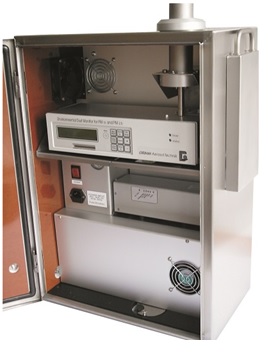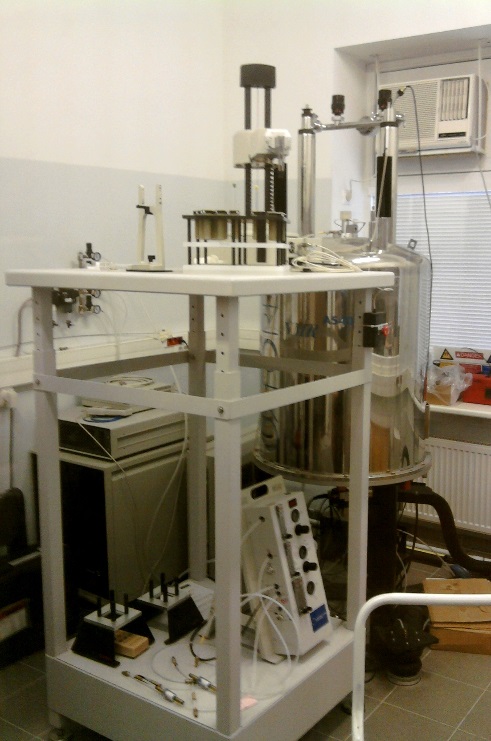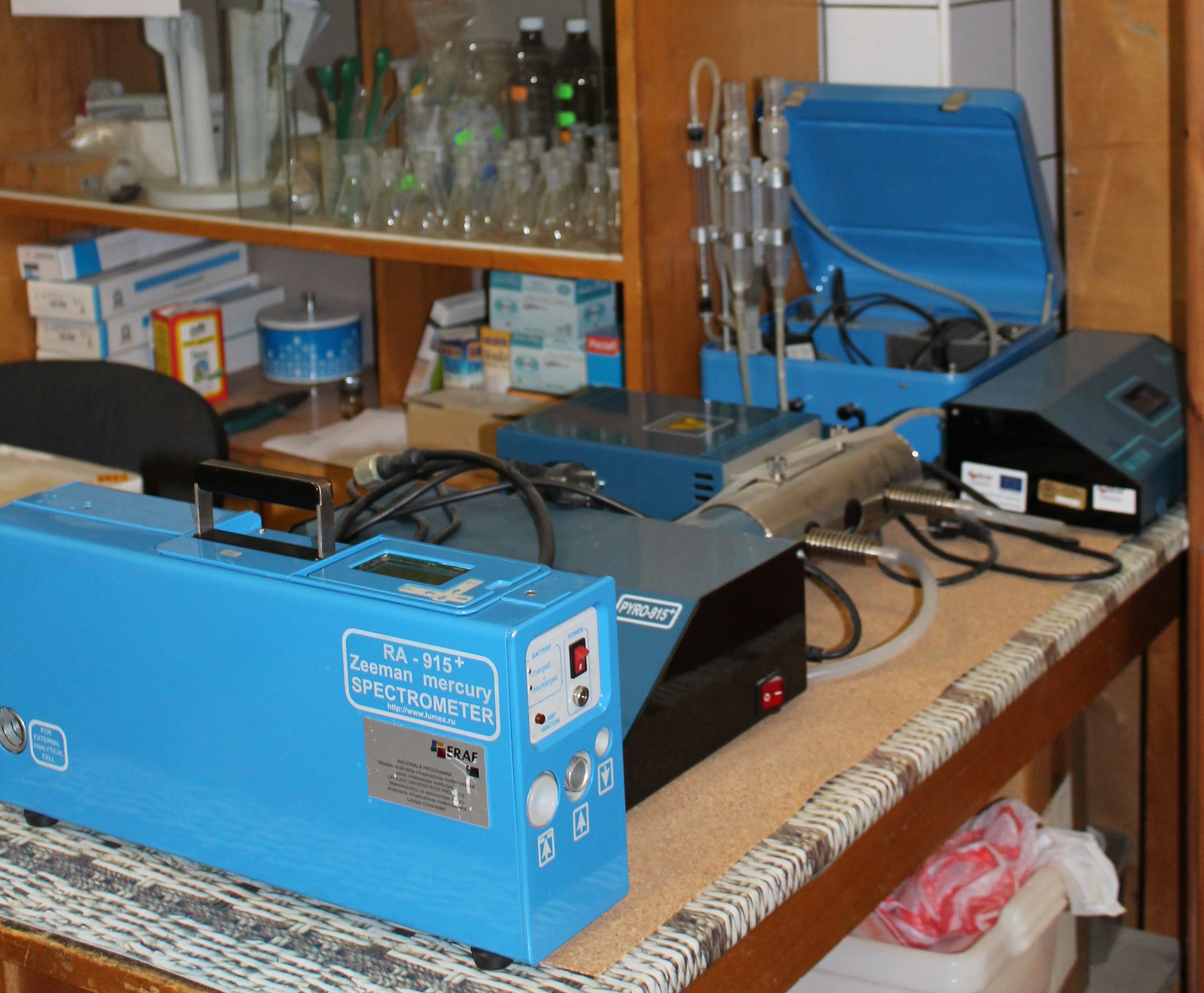
Contacts and Location
| Contact 1 | Atis Skudra |
|---|---|
| Enquire about this equipment | |
| Organisational Unit |
Institute of Atomic Physics and Spectroscopy University of Latvia |
| Building | Rīga, Šķūņu iela 4 |
Description
Used as an attachment to RA-915M (or RA-915+) the new PYRO-915+ atomizer with a large optical sell with heated windows and two chambers provides a unique direct mercury determination and allows direct analysis of complex matrix samples of solids and liquids (no pretreatment procedures required). All products are transported from the first chamber to the second one by the carried gas (in our case it is air). The second chamber is continuously heated about 800 C. There, all mercury compounds are dissociated and smoke and interference compounds are burst producing mostly carbon dioxide and water. Zeeman corrector of the spectrometer eliminates the rest background absorption. The catalyst improves the efficiency of oxidation and dissociation in the second chamber.
Specification
The RA-915+ mercury analyzer employs differential atomic absorption spectrometry technique, which is implemented using the direct Zeeman effect (Zeeman Atomic Absorption Spectrometry using High Frequency Modulation of Light Polarization ZAAS-HFM). A glow discharge mercury lamp is placed in a permanent magnetic field, whereby the 254-nm mercury resonance line is split into three polarized components, only two of those, o+ and o-, which are circularly polarized in the opposite directions, being detected for analysis. After passing through a polarization modulator, which modulates the polarization at a frequency of 50 kHz and thus triggers the line components in turn, the radiation then passes through a multi-path cell, whose equivalent optical length is about 10 m. Being equipped with narrow-band high reflectivity mirrors, the cell isolates solely the 254-nm resonance line and suppresses all the nonresonance and stray radiation. A logarithm of the intensity ratio of o+ and o-, which is proportional to the mercury atom concentration in the cell, is determined upon detecting the radiation by a photodetector and subsequent analog-digital conversion of its electric signal by a built-in microprocessor. The measurement results are read out from a built-in LC display, or are transmitted to a computer for further processing or data storage. In this measurement technique, the analytical signal depends only on mercury concentration and is independent of the presence of dust, aerosols , and other foreign contaminants in the analytical cell.
Services
Mercury determination in air, finding spots of contamination with accuracy 1-2 ng/m3. Direct mercury determination and direct analysis of complex matrix samples of solids and liquids (no pretreatment procedures required).
Funding Source
| National Research Centers (VNPC) | - |
|---|
Manufacturer
LUMEX
Model
RA-915+ Zeeman Mercury Spectrometer
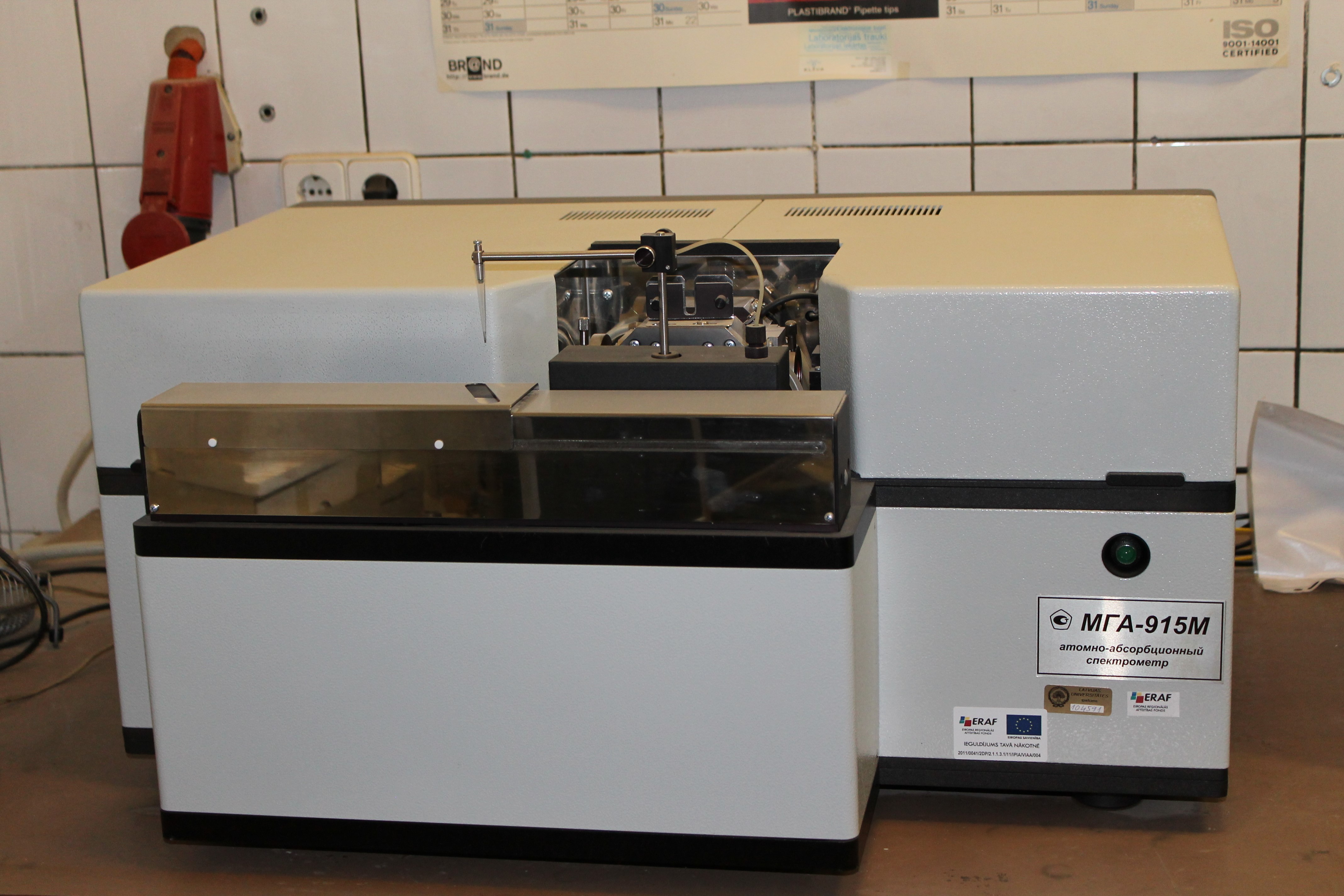
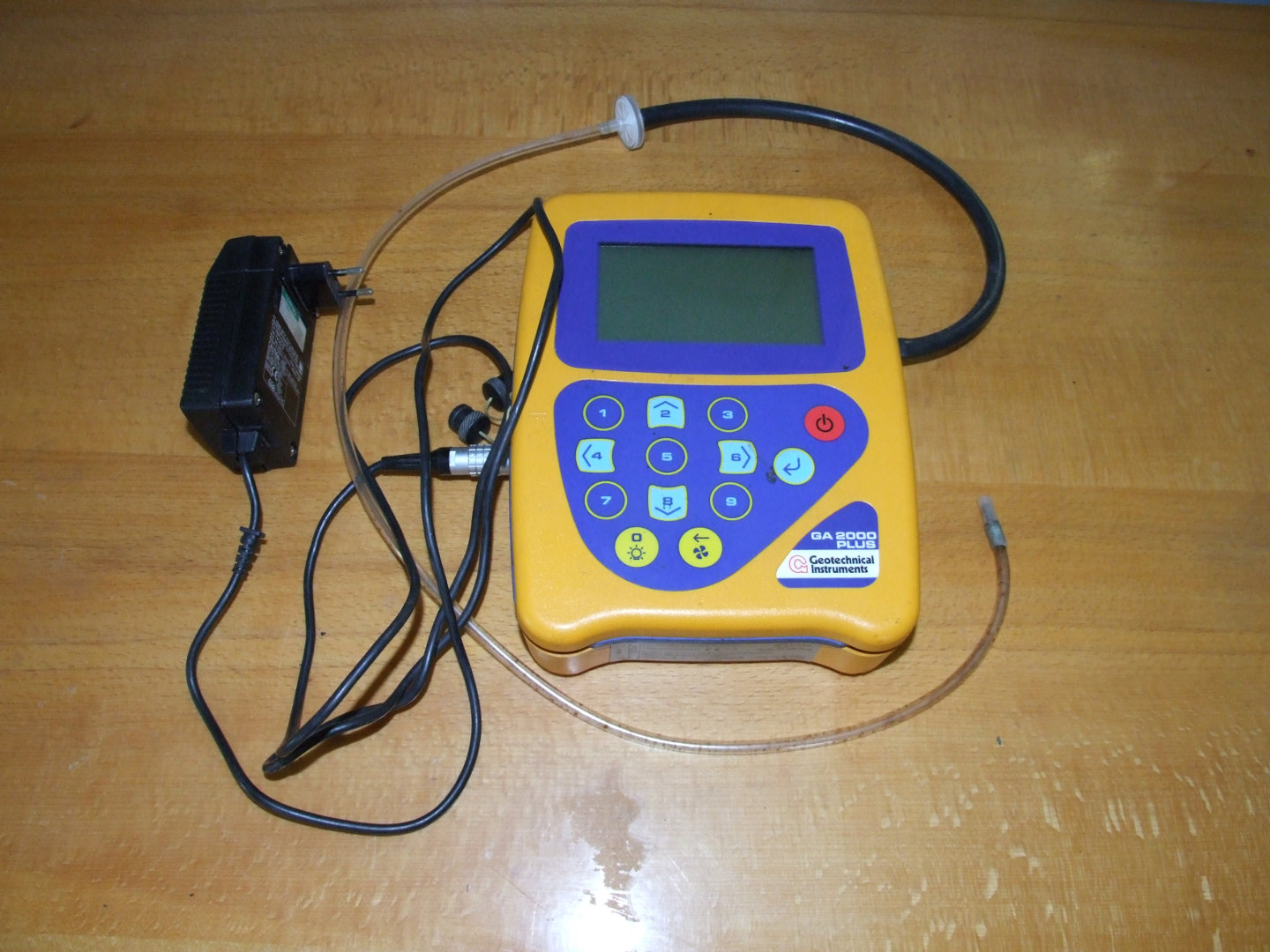
.jpg)
